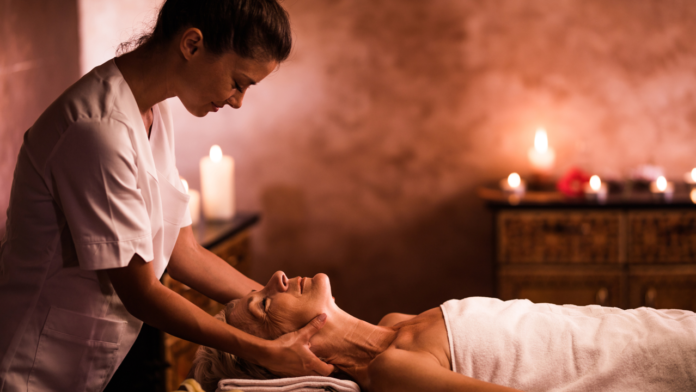When was the last time someone asked, “How are you?” and you actually felt the weight of your own response? For many, the hustle of daily life stifles authentic connection, leaving behind a growing sense of stress and disconnection from one’s own body. Imagine a moment when exhaustion took over, when you finally surrendered to the idea of a professional massage.
Too often, society views professional massages (마사지구인) as indulgent treats rather than essential therapies. But when it comes to stress relief, pain reduction, and even improved sleep, professional massage therapy emerges as a powerful ally. Embracing this reality can transform how individuals approach their health. Integrating regular massage treatments into one’s routine can bridge the gap between surviving and thriving, establishing a holistic approach to well-being. As stress and sleep disorders continue to plague many across the United States, the necessity of massage therapy feels more pressing than ever.
The True Benefits of Professional Massages

Professional treatments offer numerous benefits that enhance both physical and emotional well-being. By delving into the healing power of treatment therapy, individuals uncover a holistic approach to manage stress and alleviate physical discomfort. The role of licensed treatment therapists stands at the forefront of this therapeutic experience, combining expertise with personalized care to facilitate effective healing.
Understanding the Healing Power of Massage Therapy
Massage therapy employs various techniques that work harmoniously to relieve muscle tension and increase blood circulation. Each approach taps into the healing power of massage therapy, offering a unique path to relaxation. The strategic application of pressure and stretching fosters not only physical recovery but emotional resilience as well.
How Licensed Massage Therapists Facilitate Healing

Licensed massage therapists play a crucial role in delivering effective treatments. They assess individual needs and tailor sessions to maximize treatment benefits. By understanding the body’s anatomy and how stress manifests physically, these professionals guide clients toward enhanced well-being. Their training ensures safe practices, enabling them to address discomfort while promoting relaxation.
Massage Techniques That Promote Relaxation
Diverse treatment techniques each bring distinct advantages, catering to specific needs and preferences. Common options include:
- Swedish Massage: Focuses on relaxation and stress reduction through gentle strokes.
- Deep Tissue Massage: Targets deeper layers of muscle, alleviating chronic pain.
- Prenatal Massage: Provides relief for expectant mothers, emphasizing comfort and safety.
- Trigger Point Therapy: Pinpoints tight areas to release tension and improve mobility.
Physical and Emotional Benefits for Overall Well-Being
The advantages of professional massages extend beyond mere relaxation. Regular sessions contribute to:
| Benefit | Description |
| Pain Relief | Effective in reducing discomfort from muscle strain and tension. |
| Improved Circulation | Enhances blood flow, benefiting organ function and overall physical well-being. |
| Stress Reduction | Promotes relaxation, reducing anxiety and improving mood. |
| Better Sleep Quality | Aids in fostering a deeper, more restorative sleep. |
Understanding these elements fosters appreciation for the transformative effects of massage therapy, encouraging individuals to incorporate it as an essential component of a healthy lifestyle.
Reality of Professional Massages

Understanding the reality of professional treatments can transform expectations and enhance experiences. Sadly, numerous misconceptions about treatments continue to cloud perceptions about its benefits. Painful experiences are often mistakenly believed to equate with effective treatment. In reality, skilled therapists prioritize comfort while skillfully addressing tension and discomfort.
Common Misconceptions about Pain and Relaxation
The belief that an effective treatment must be painful is one of the most pervasive misconceptions about treatments. Many clients equate intense pressure with better results. In truth, relaxation is the ultimate goal of any treatment therapy session. Therapists utilize various styles and pressures to suit individual comfort levels, promoting a sense of ease rather than discomfort.
Types of Massage Techniques and Their Unique Benefits
Several types of treatment techniques cater to diverse needs, each offering unique benefits. Common ones include:
- Swedish Massage: Known for its gentle techniques, perfect for relaxation and stress relief.
- Deep Tissue Massage: Targets deeper layers of muscle tissue, ideal for chronic pain.
- Sports Massage: Focuses on sports-related injuries and flexibility, beneficial for athletes.
- Reflexology: Involves pressure points in the feet and hands, promoting overall wellness.
- Prenatal Massage: Tailored for expectant mothers, addressing specific needs during pregnancy.
Insights into Treatment Etiquette and Client Expectations
Massage etiquette plays a vital role in fostering a positive experience for both therapist and client. Clients should arrive on time, communicate any specific concerns, and maintain an open dialogue regarding comfort levels during the session. Understanding client expectations ensures that the session meets individual needs while allowing the therapist to focus on appropriate techniques and adjustments.
Recognizing Massage Contraindications for Safe Practice

Safety in massage therapy is paramount, which is why understanding treatment contraindications is crucial. Certain conditions may hinder an individual’s ability to safely receive a treatment. These may include:
- Acute injuries or inflammation
- Contagious skin conditions
- Severe osteoporosis
- Recent surgeries
- Certain cardiovascular conditions
Clients must communicate their health status efficiently to therapists to ensure the safest experience possible.
Conclusion
In summary, the reality of professional treatments extends far beyond mere relaxation; it encapsulates a wide range of holistic health benefits that can significantly enhance one’s quality of life. By understanding the intricate nuances of treatment therapy, individuals can better appreciate its vital role in promoting physical and emotional well-being. Awareness of various techniques and the knowledge to dispel common misconceptions empowers people to make informed decisions about their self-care routines.
Recognizing the importance of self-care is essential for maintaining health in today’s fast-paced world. Regular treatments not only relieve tension and stress but also contribute to improved circulation, flexibility, and overall vitality. By integrating massage therapy into a regular wellness regimen, people can cultivate a healthier lifestyle that nurtures both the body and mind.
Ultimately, embracing professional treatments as a fundamental aspect of self-care can lead to transformative changes in one’s well-being. This proactive approach can inspire individuals to prioritize their health, ensuring a balanced and fulfilling life. Through effective communication with licensed massage therapists, they can tailor their experiences to maximize the numerous benefits of treatment therapy, thus fostering a deeper connection within themselves and the healing process.









